Discover Rome
About Rome

Rome is the capital of Italy, a large cosmopolitan city with an artistic, architectural and cultural history that has been influencing the whole world for almost 3000 years. It is dominated by ancient structures with an infinity of places to visit, covering over two millennia of history. It is known all over the world as the Eternal City, a synonym for everlasting beauty, history and spirituality.
At least for Europe the saying holds true: all roads lead to Rome! More than 500,000 are the routes that from every part of the continent lead to the City! Capital of Italy, located in the centre of the Country and in the centre of the Mediterranean sea, Rome stands as a central hub easily accessible to travelers worldwide.
The City is a living testament to its millennia-old legacy and proudly displays iconic ancient ruins, classical architecture, Renaissance palazzos, and baroque fountains. Yet, amidst this historical splendor, the city merges with modernity through pearls of contemporary art, innovations, and cutting-edge architecture. Cradle of history and art, it is known all over the world as the Eternal City, a synonym for everlasting beauty, history and spirituality. The magnificence and unbelievable number of historical monuments, churches, museums leave visitors in awe and wonder. One of the preferred sites for millions of tourists, in addition to hotels and conference facilities, there are up-to-date exhibitions, art galleries, theatres, and cultural events which add a charming and relaxing flavour to participants’ stay in the city.
Modern Rome is also a major international business destination. It is the seat of the Italian government and the economy is dominated by services, telecommunication companies, research, tourism, construction and banking.
Interested to explore Rome with experienced guides?
Learn all about the civilization that has marked the history of the whole world and easily move from one point to another of the city with the City Sightseeing Rome buses!
Diverse offer, featuring affordable prices and a wide range of time slots.
Experience Rome
Rome is the city of eternal charm. Its most striking feature is that wherever you look there is always something interesting to see or do.
Rome has thousands of years of history. It was the capital of the Roman Empire and the beating heart of one of the most important ancient civilizations. Its historical and artistic heritage is of great importance.
Rome boasts the highest concentration of monuments and archaeological sites in the world. It is the City of Great Beauty. Every corner, street, church, or neighborhood has stories, secrets and legends to tell that have grown over time.
Rome is an immense theater with sumptuous sets.
There are a multitude of cloisters with secluded charm. Slender trees and pines exude serenity and majestic domes and obelisks harness and transform light into magic.
Highlights

Among the most famous monuments and attractions there is the Colosseum, inaugurated as the Flavian Amphitheater, it is undoubtedly one of the first, if not the first ever, among the things to see in Rome. Symbol of the Roman history and its glorious past, it was here that gladiators met in mortal combat and condemned prisoners fought off wild beasts in front of baying, bloodthirsty crowds. It was also the set of epic simulations of naval battles.
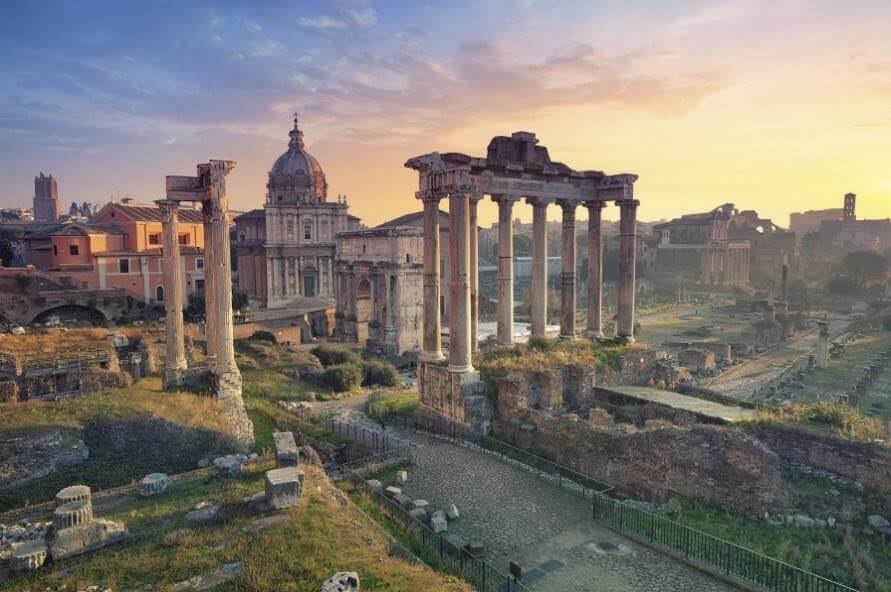
Between the Colosseum and Piazza Venezia lies one of the most fascinating archaeological areas to visit during a stay in Rome: the Valley of the Forum, the area where Roman civilization was born and developed over the centuries. The construction on the former marshy land of buildings used for political, religious, judicial and commercial activities, sanctioned the birth of the Roman Forum (VII century BC), the center of public life of ancient Rome for over a millennium.
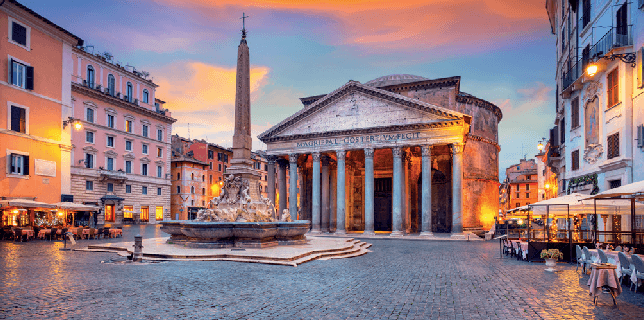
The Pantheon of Agrippa is the best-preserved building from ancient Rome, practically intact through the centuries, and the most copied all over the world. It is also the only roman building that is still in use with the same purpose it had originally been created for: as a temple. Nowadays it is a catholic church named “Basilica of Saint Maria ad Martyres”, where few important tombs can be found, such as the tomb of the great Renaissance artist Raphael. The dome is considered an architectural wonder and the biggest ever built, with a surprising oculus that is the building’s main source of natural light. With the rainy season the question comes up: does it rain in the Pantheon?
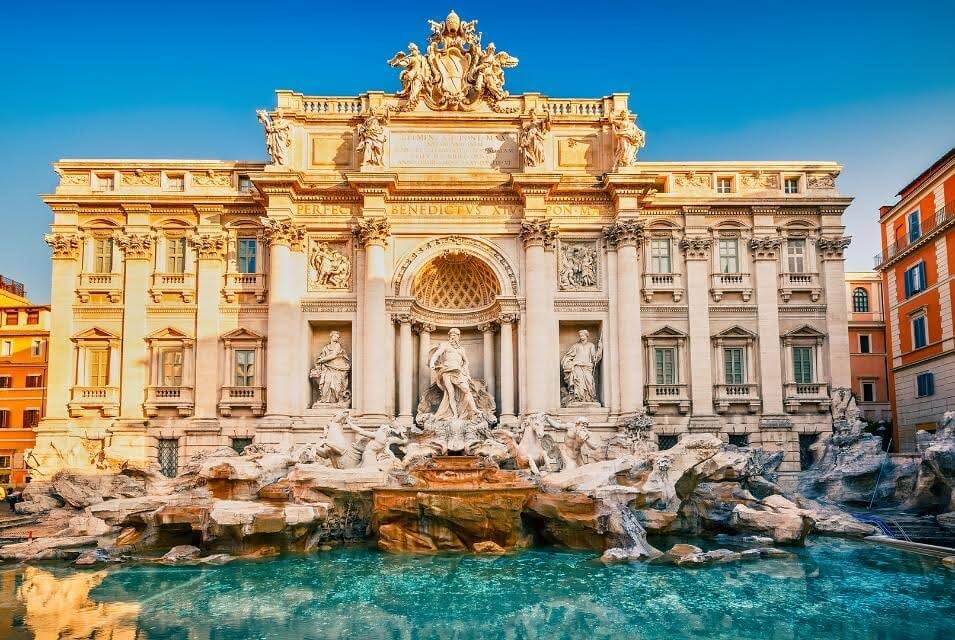
If you are in Rome and intend to return, then do not hesitate to throw a coin in the famous Trevi Fountain to make your wish come true. Designed by the architect Nicolò Salvi, the Fountain has received the waters of the Virgin aqueduct since the time of Augustus. The central theme of the work is the sea, and the Baroque meets classicism, in perfect harmony. The Trevi Fountain has been a film set, the scene of events and the stage for large parties.
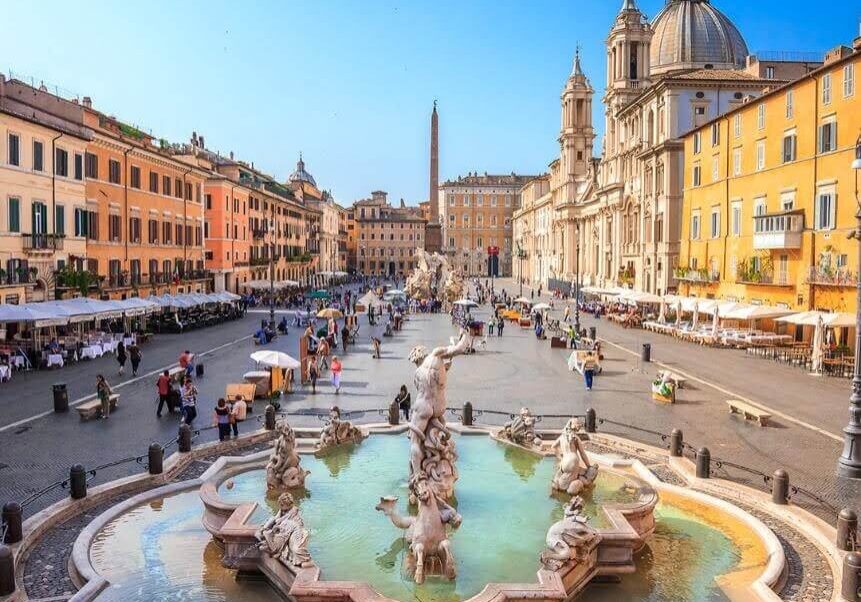
One of the squares most dear to Romans and tourists, is Piazza Navona, an ideal place to entertain yourself while sitting comfortably at the table of a café among sculptures and Baroque architecture. Piazza Navona stands in the place of the ancient stadium of Domitian (hence its oval shape), wanted by the emperor to host athletics competitions.
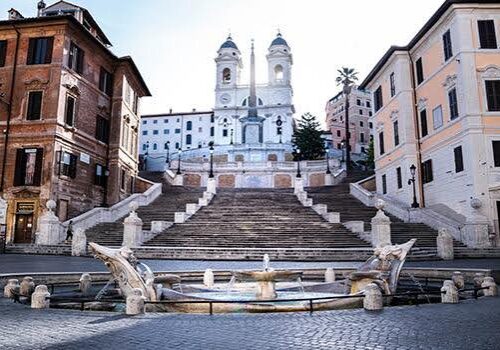
Piazza di Spagna (Spanish Square) is one of the most-visited squares in Rome and a magnificent example of Italian Baroque style. Located at the bottom of the of the Spanish Steps, and at the centre is the Fontana della Barcaccia (Fountain of the Ugly Boat) designed by Bernini. The Scalinata di Trinità dei Monti (The Spanish Steps) connect Piazza di Spagna and the Church of Trinità dei Monti.
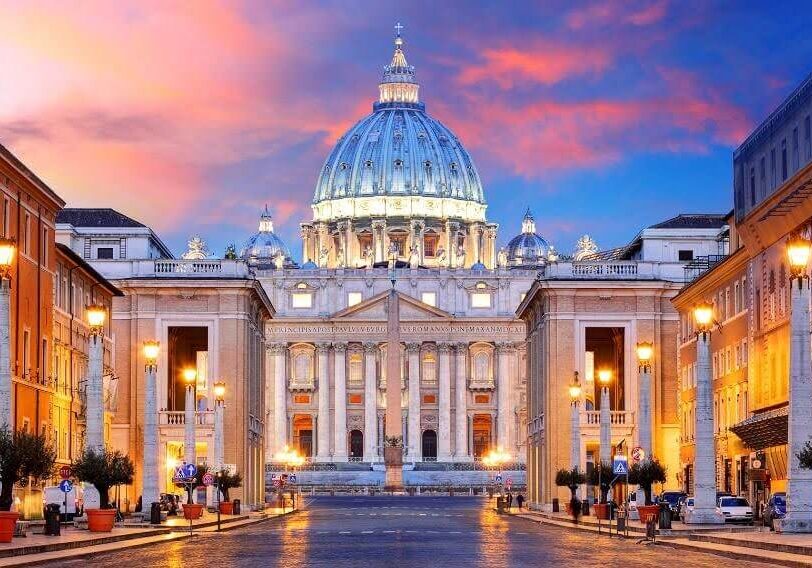
With its Michelangelo dome and monumental façade, St. Peter’s Basilica dominates the spectacular colonnaded portico of St. Peter’s Square, Bernini’s architectural masterpiece. Heart of the Catholic Church, the Basilica stands where in 324 Constantine built a sanctuary in honor of the First Apostle who was crucified and buried in that very place.
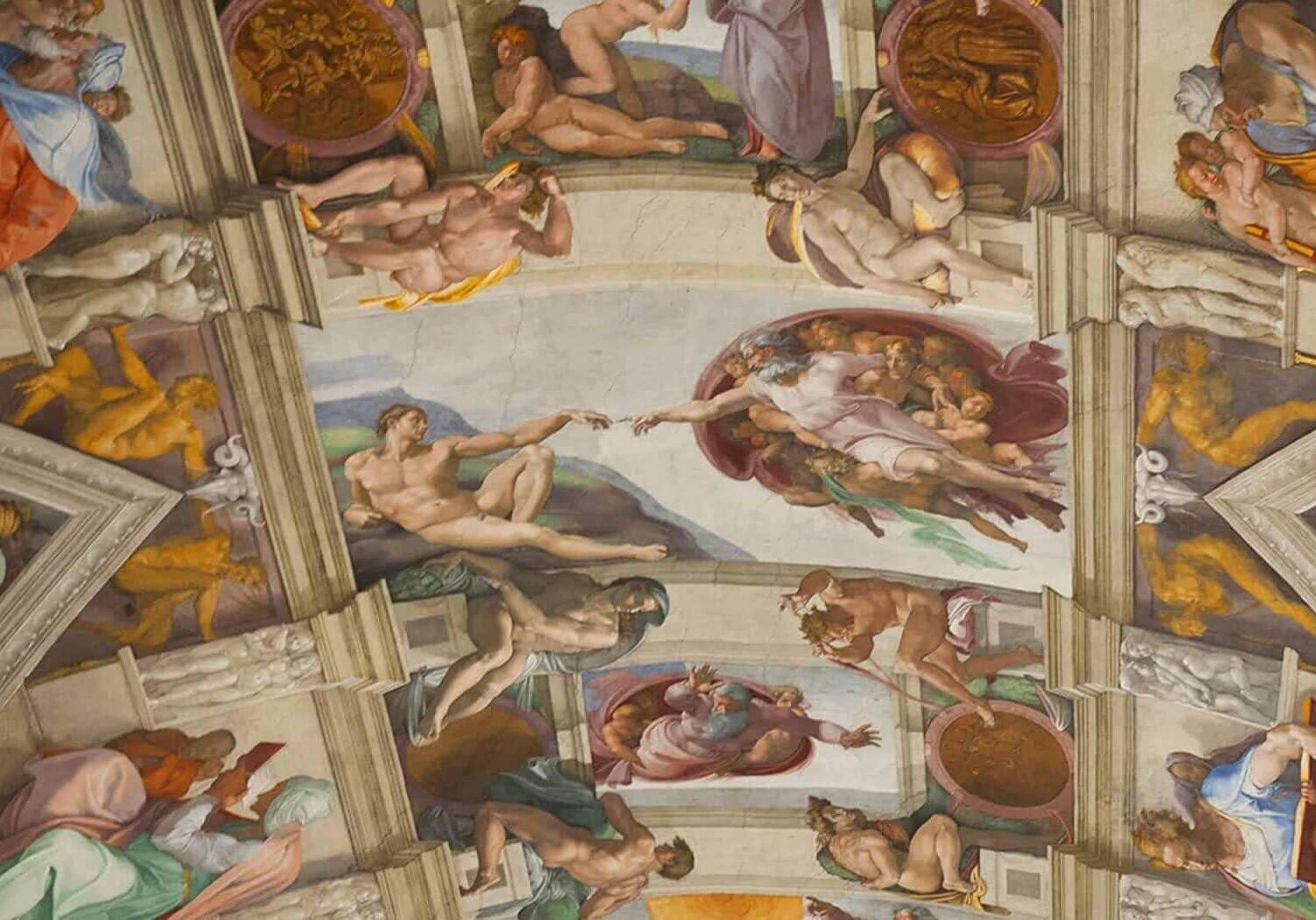
The Vatican Museums, which conserve the immense collection of art amassed by the popes from the seventeenth century onwards, also host The Sistine Chapel visited every year by millions of tourists from all over the world.
The Sistine Chapel is decorated with splendid frescoes by Michelangelo. His wonderful works cover the ceiling and the back wall (with the Last Judgement) above the altar. The conclave, baptisms and other official ceremonies of the Pope are held inside the chapel.
Find out more about Rome tourist information by visiting the Tourist Office Website.
